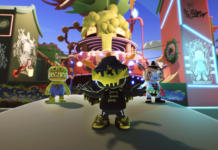It’s been interesting getting back into Magic: the Gathering and hearing people talk about Hearthstone, Blizzard’s online collectible card game.
“It’s Magic Lite.”
“It’s okay, not terribly balanced.”
“I don’t see what the big fuss is about.”
These are all very legitimate claims—from the outside looking in. Hell, it’s a thought process I had after the game’s announcement back in March. All of that changed when I got my hands on the demo.
Here’s a gameplay recap: players will customize decks based on classes found in World of Warcraft (minus the monk). Each class will feature a hero that has their own unique ability. Players will cast creatures and spells with the intent of destroying the enemy hero. You’ll cast these cards by spending resources, gained at the rate of one energy a turn. Attacks can be made at a hero directly, bypassing enemy defenders, should they choose. First player to destroy the enemy hero wins.
After a long summer of waiting, I’ve finally gained access to the beta. My patience was rewarded. It was time to get back into the Blizzard collectable card action. Which type of deck would I make first? I enjoyed playing the Warrior deck back at PAX so maybe I’d give that—
Oh what the hell is this tutorial I’m being forced to play? I’ll just skip it and get into the—
I can’t pass it? Bah.
On a serious note, the tutorial isn’t that big of a roadblock. It did have a tendency for its matches to drag on, but much of that may have been due to me already being familiar with the game. You’re given the Mage deck and set-up in circumstances that (should) result in your victory. Veterans of the card genre will feel right at home. Newcomers, however, may be left scratching their heads over a couple of gameplay mechanics.

Is this the fault of the game? Not necessarily. All card games run into a serious problem when moving from the physical space to a virtual one: the loss of social interaction. While the game does a satisfactory job of showing newcomers the ropes, there are still moments of confusion that will arise.
Here’s one area where the virtual space is beneficial to the card genre: keeping track of the game’s moving parts. There’s a lot to factor in here: energy, hero powers, cards being played with various effects going off if conditions are met. The game handles them (somewhat) smoothly, with an occasional (presumably) latency delay here or there. Everything is shown clear as day in front of the players. You’re never wondering why you lost, though from time to time you’re left scratching your head as to where that loss came from.
There are three different game modes available to choose from in the Hearthstone beta: practice, play, and arena. Practice and play sound exactly like how they play out: practicing against AI bots and playing against human opponents respectively. The more you play with a different class, the more class cards you’ll unlock. The best cards, however, will come from booster packs. They can be purchased either with in-game currency gained from completing quests, or by spending real money.
The third mode, arena, is arguably the bread and butter of the game. It plays out somewhat like drafting in Magic: The Gathering. You’ll be given the choice of three cards. You’ll pick one to add to your deck and then move on to a choice of another three cards. This process continues until a deck is completed. You’ll then play with your deck against other arena constructed decks until you win nine games or lose three. You are compensated based off your performance. For those that have a basic understanding of the card and deck mechanics, it’s an excellent way to test out your deck-making skills.
We’ve only scratched the surface of the Hearthstone beta. There’s a ton of content to digest, so check back with GameZone for more coverage.










